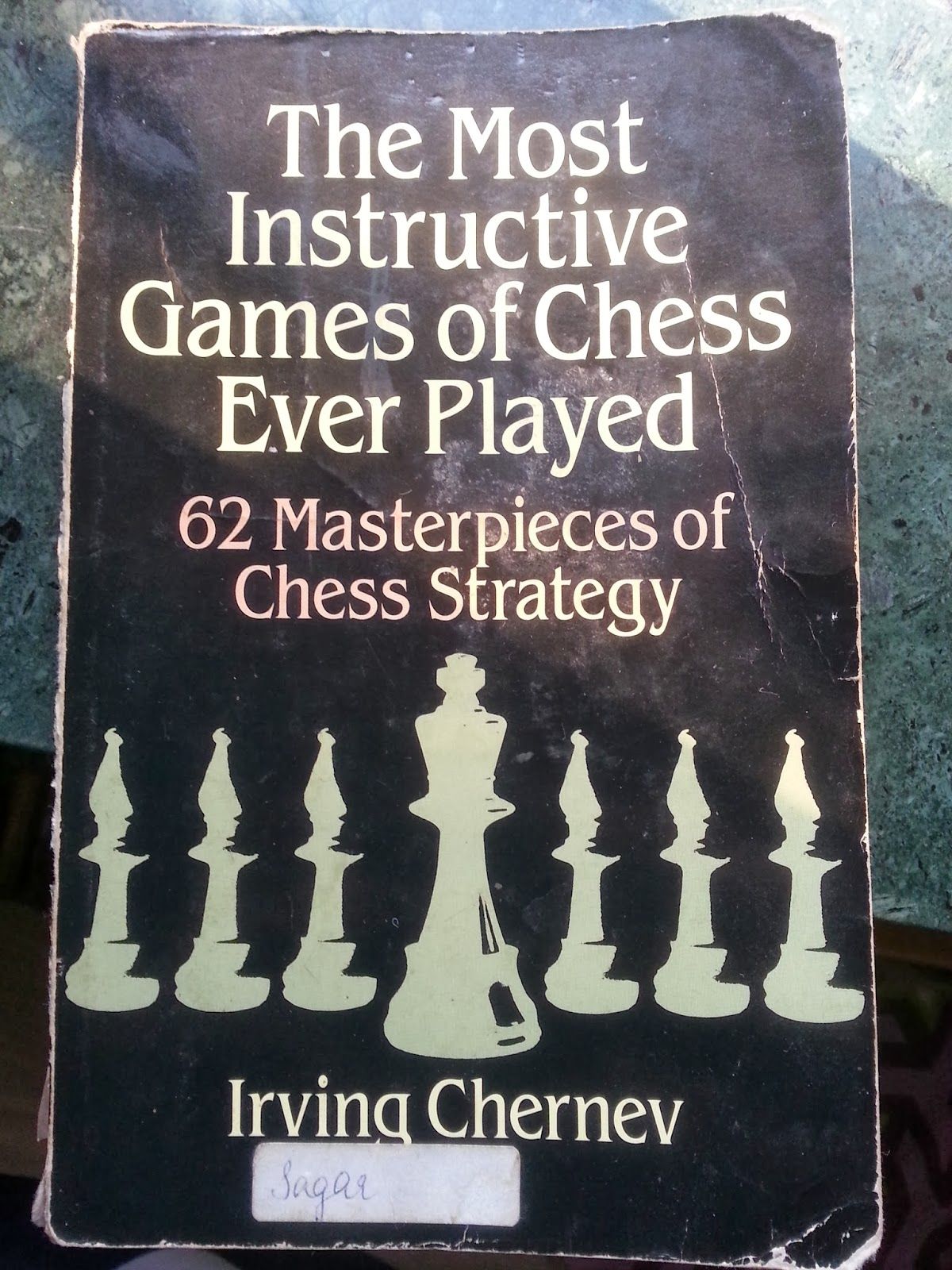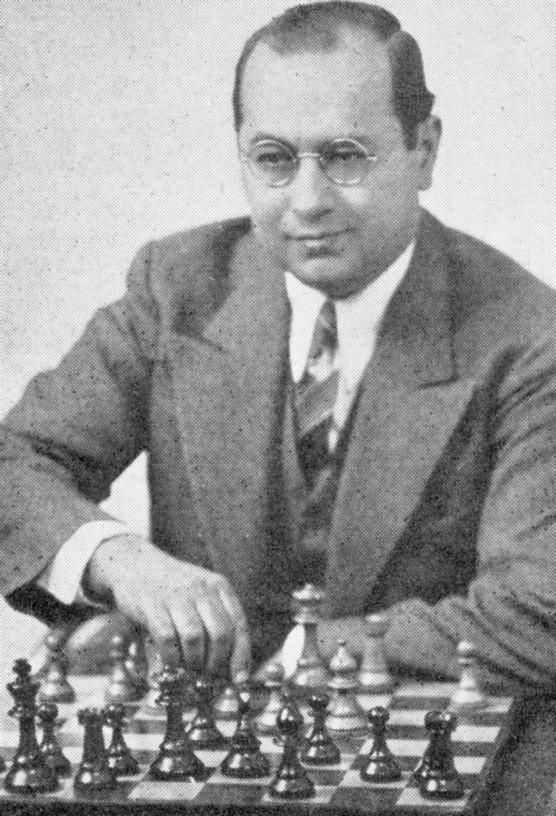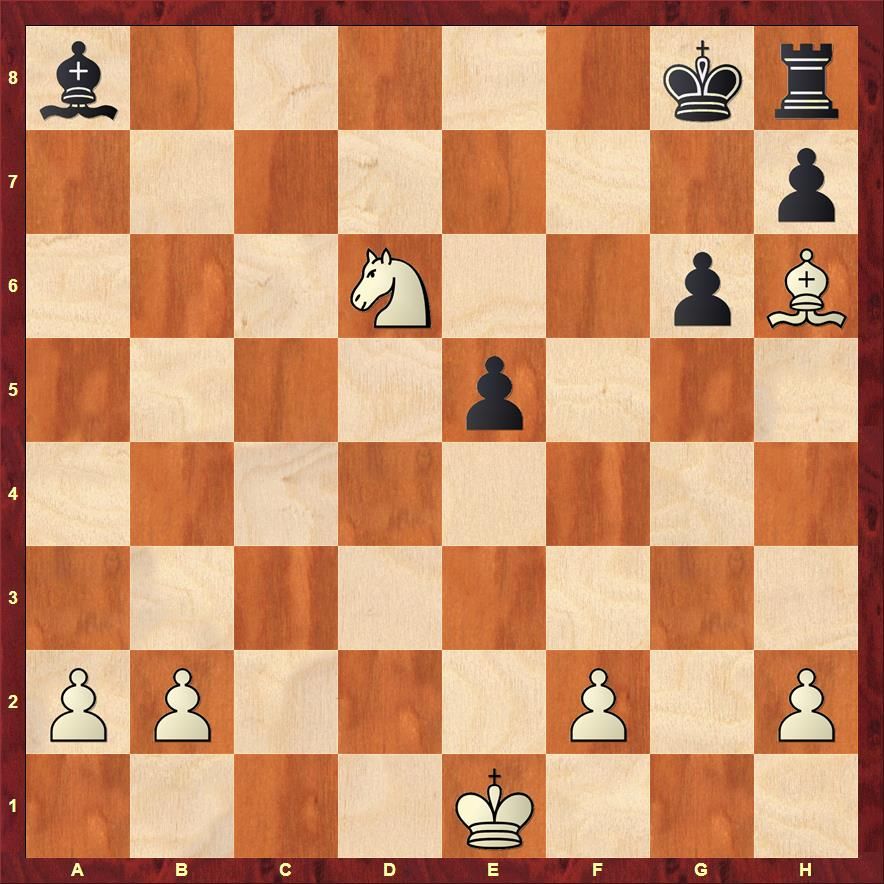My favourite chess book
What's your favourite book of chess? This question is asked many a times and every chess player has a book that is close to his heart. Usually it's a book that one has read in childhood and has ignited the love for the game. In case of IM Sagar Shah it was the 62 most instructive games of chess ever played by Irving Chernev. In this article he speaks about what he loved about the book and also annotates his favourite game, which, to be frank, is some sort of a fairy tale!
My favourite chess book
When I was a 12-year-old boy learning about chess, (let's say my strength would be around 1700 by current standards) a wonderful thing happened to me. My cousins in the USA sent a chess book to me. It was called the "62 most instructive games of chess ever played" by Irving Chernev.

When someone asks me the question: "Sagar, what's your favourite book on chess?" I close my eyes and try to remember from all the books I have read. And I have to say, the first book that flashes in front of my eyes is 62 most instructive games of chess!
The book that was sent by my cousin had become my best companion for a month! I would sit inside a room locked in solace, carefully opening a page of this book and make the moves on the chessboard. The annotations were not as in depth as Dvoretsky's nor were they as humorous as Aagaard's. But there was something about this book which attracted me! It was the introduction to each game, the perfectly selected masterpieces and the wonderful words used by the author! Oh, I fell in love with each and every game! I have replayed these 62 gems again and again and I still find them so beautiful even till this date! I salute the author, Irving Chernev for this wonderful work and I take this opportunity to bring towards you my favourite game of the book which I have annotated!

The game which I loved the most in the book is the game number 19. It's not the most accurate of games but it's extremely beautiful.
The See Saw check, Zugzwang and other Tactical motifs
(1) Kupferstich - Andreassen [C27]
Denmark 1953
This is what Irving Chernev has to say about this game: "Wonderful things go on in this game! There is a series of see saw checks that is remarkable, an imprisonment of King and Rook that is unique, and a threat of mate requiring at least ten moves to execute, yet so clear cut a child could carry it out. Question: Does this game played so brilliantly come under the heading of entertainment or Instruction?"
I would like to add a few things to this: This game sort of made me realize how beautiful the game of chess was! I had previously seen devastating attacks by Morphy. There were the immortal games and the evergreen games but somehow this one catches my fancy even today. I just don't know what it is that attracts me to this game? I think its just the clarity of the combination. When the combination is played we are all left in a state of shock and surprise, but the beauty of the combination is such that once it is on the board, you understand its power in an instant. I think such clarity translates into chess beauty for me! A perfect game to illustrate the maxim: Simplicity is the ultimate sophistication!
[Site "?"]
[Date "1953.??.??"]
[Round "?"]
[White " Kupferstich"]
[Black "Andreassen"]
[Result "1-0"]
[ECO "C27"]
[Annotator "Sagar,Shah"]
[PlyCount "67"]
[SourceDate "2017.02.04"]
[SourceVersionDate "2017.02.04"]
am no big expert. But suffice it to say that the game becomes interesting
right from move no.3.} 4. Qh5 $5 {this attacks the e5 pawn and threatens mate
on f7. Black has only one logical move now.} (4. Nxe4 d5 {is just what Black
wants.}) 4... Nd6 (4... Ng5 5. d4 {is too powerful for white.}) 5. Bb3 Nc6 (
5... Be7 {is the safe way to play here. Quickly castle it out and gain a good
position.} 6. Qxe5 O-O $11) 6. Nb5 $1 {The tactics are ripe even though both
sides are not fully developed. Now the main issue is that the queen on d8
cannot leave because of the c7 weakness. Black has the only move now g6.} g6 7.
Qf3 {White continues creating the threats.} Nf5 (7... f5 8. Qd5 Qf6 9. Nxc7+
Kd8 10. Nxa8 b6 {The computer is not too enthusiastic about Black's chances
here but the second player has more space and better development. It can well
be that his attack can assume dangerous proportions. Alekhine believes that
black has good chances and I do not want to argue with the best in the
business! in fact 50 games have reached this position and black isn't doing so
badly.}) 8. Qd5 (8. g4 {could have been strong.} Nh6 9. g5 Nf5 10. Qd5 Qe7 11.
Nxc7+ Kd8 12. Nxa8 b6 {is similar to previous variation. Black has some
attacking chances.}) 8... Nh6 9. d4 {the threat is Bh6 followed by taking on
f7. You can see how each move is a threat.} d6 {in order to meet Bh6 with Be6.}
10. Bxh6 Be6 11. Qf3 Bxb3 (11... Bxh6 {was no good because of} 12. d5 $18) 12.
Bxf8 Ba4 13. Bg7 Rg8 {maybe a mistake.} ({Accurate would have been} 13... Bxb5
14. Bxh8 Nxd4 15. Qc3 Qg5 {when its black who has the initiative inspite of
being an entire rook down. g2 is attacked and 0-0-0 is coming up.}) 14. Bf6 Qd7
15. Na3 $2 {A bad move conceding the initiative.} ({Better was to simply play}
15. O-O-O Bxb5 16. dxe5 $16) 15... Nxd4 16. Qh3 {White rushes to exchange
queens before Black's initiative assumes dangerous proportions.} Qxh3 17. Nxh3
Nxc2+ (17... g5 {could have been an interesting choice but it's not so easy to
find.} 18. Nxg5 (18. Bxg5 Bxc2 $14) 18... Rg6 $14) 18. Nxc2 Bxc2 19. Rc1 Be4
20. Ng5 $6 (20. Rxc7 Bxg2 21. Ng5 {was the right way to reach the game
position.}) 20... Bxg2 (20... Bc6 {would have kept White's advantage under
control.}) 21. Rxc7 $3 {A pretty rook sacrifice.} (21. Rg1 Bc6 22. Nxh7 Kd7 $16
{Black is hanging on.}) 21... Bxh1 22. Nxf7 (22. Re7+ {When I gave this
position to my students, instead of the game continuation, they chose this
move and I was sort of surprised that there was absolutely no refutation!} Kd8
(22... Kf8 23. Nxh7#) 23. Nxf7+ Kc8 24. Nxd6+ Kb8 25. Bxe5 $1 {Black is
defenseless.} a6 26. Nb5+ Kc8 27. Rc7+ Kd8 28. Bf6+ Ke8 29. Nd6+ Kf8 30. Rf7# {
What a beautiful variation!}) 22... Bd5 23. Nxd6+ Kf8 24. Bg5 $1 {I like this
move! Now Bh6 is threatened.} Rh8 {Black goes passive and tries to cling onto
his material advantage. This gives us a beautiful picture in the end.} ({
He had to give up his entire rook with} 24... Rg7 25. Bh6 {But even this will
end the game soon.}) 25. Bh6+ Kg8 26. Rg7+ Kf8 27. Rc7+ (27. Rxb7+ Kg8 28. Rg7+
Kf8 29. Rxa7+ Kg8 30. Rg7+ Kf8 31. Rd7+ Kg8 32. Re7 Bc6 33. Rg7+ Kf8 34. Rc7+
Kg8 35. Rxc6 {was the cleanest way to win according to the computer, but how
on earth will computer ever understand the concept of aesthetic beauty!}) 27...
Kg8 28. Nc8 {maybe not the most accurate move. He could have done what he
wanted to do in the game right away but let me not spill the beans!} Bc6 29.
Rg7+ Kf8 30. Rxb7+ Kg8 (30... Ke8 31. Nd6+ Kd8 32. Bg5#) 31. Rg7+ Kf8 32. Rxa7+
Kg8 33. Rxa8 $3 Bxa8 34. Nd6 $3 {What a final position!} 1-0

Just the most brilliant concept ever! Both the white pieces box in the black king. As the king cannot move, the rook on h8 cannot move and hence only the bishop can keep moving. And look at the further beauty! The white pieces are on dark squares, Hence the bishop cannot disturb them! Meanwhile the white king goes from d2-c3-b4-c5-b6-c7-d8-e7 and then with Ne8 or Ne4 he gives a mate on f6. Some might say the black bishop is useless. Yes he is useless for black but for white he is a huge asset. Without him it would have been stalemate if Black gives up his pawns! This last position made such an impression on my 12-year-old mind that I immediately fell in love with this royal game!
The article was originally published on 4th February 2014 on Sagar's personal blog - Sagar Teaches Chess.
The book is available on Amazon and can be ordered from here.
